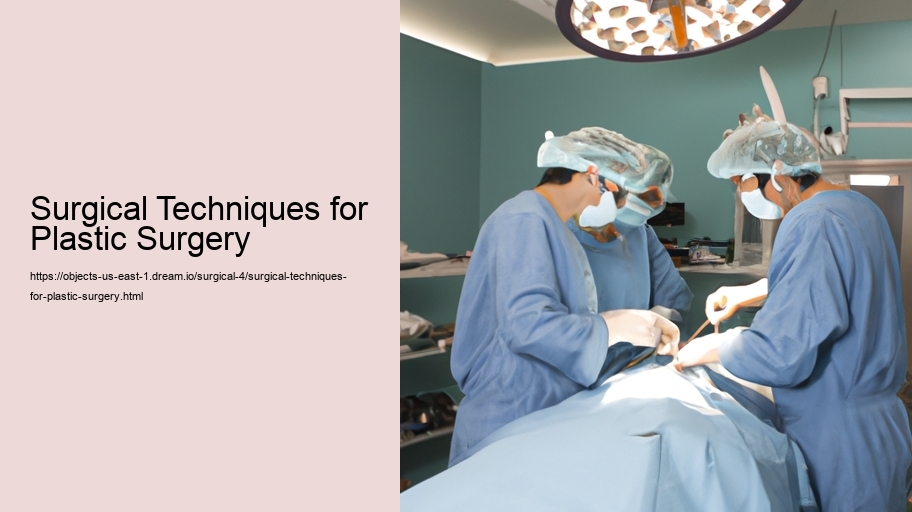Surgical Techniques for Plastic Surgery
Plastic surgery is a specialized branch of surgery that focuses on the reconstruction, alteration, or restoration of the human body. It can be divided into two main categories: reconstructive surgery, which aims to restore the function and appearance of body parts affected by congenital defects, trauma, burns, disease, or tumors; and cosmetic or aesthetic surgery, which is performed to enhance or modify the physical appearance according to the patient's desires. The field is constantly evolving, with innovations that improve outcomes, minimize risks, and reduce recovery time. This essay delves into some of the key surgical techniques used in plastic surgery.
One fundamental technique in plastic surgery is skin grafting. This procedure involves transplanting skin from one area of the body to another to replace damaged or missing skin. It is commonly used in burn treatment, reconstruction after skin cancer excision, and extensive wound repair. There are different types of skin grafts, including split-thickness grafts, which are thin layers of skin taken from a donor site, and full-thickness grafts, which include all of the dermis and provide better aesthetic results but require a well-vascularized wound bed for successful integration.
Flap surgery is another critical technique in the plastic surgeon's arsenal. Unlike grafts, flaps carry their own blood supply. This characteristic allows for the transfer of larger, more complex tissues, including skin, fat, muscle, and sometimes bone, from one part of the body to another. Flap surgeries are used in breast reconstruction after mastectomy, limb salvage procedures, and facial reconstruction. The advancement of microsurgical techniques has revolutionized flap surgery, enabling the reattachment of severed parts and the transfer of free flaps from distant donor sites with reconnection of tiny blood vessels under a microscope.
Liposuction is a popular cosmetic procedure that removes excess fat from various parts of the body, such as the abdomen, thighs, buttocks, and arms. The technique involves the insertion of a cannula, a thin tube, through small incisions, and the application of a vacuum to suction out unwanted fat. Modern variations of liposuction include tumescent liposuction, where a medicated solution is infused into the fatty area to minimize bleeding and ease fat removal, and ultrasound-assisted liposuction, which uses ultrasonic energy to liquefy fat cells before removal.
Rhinoplasty, commonly known as a nose job, is a surgical technique to change the shape or size of the nose. It can be performed for aesthetic reasons or to correct functional issues such as breathing difficulties. Rhinoplasty requires precise and careful reshaping of nasal bone and cartilage to achieve the desired contour while maintaining or improving nasal function. Surgeons may use either an open approach, where incisions are made across the columella, the narrow strip of tissue separating the nostrils, or a closed approach, with incisions hidden inside the nose.
Breast augmentation is the surgical placement of breast implants to increase fullness and projection of the breasts or to improve symmetry. The procedure involves making an incision and creating a pocket either behind the breast tissue or under the chest muscle to accommodate an implant. Surgeons must consider a variety of factors, including implant type, size, and placement, to achieve results that meet the patient's expectations and are in harmony with their body proportions.
Facelift surgery, or rhytidectomy, aims to reduce the signs of aging in the face and neck. The procedure typically involves removing excess skin, tightening underlying tissues, and redraping skin on the face and neck. Advanced techniques focus on restoring volume to the face rather than just tightening the skin, which can lead to a more natural and youthful appearance.
In reconstructive plastic surgery, the use of tissue expansion is a technique that enables the body to "grow" extra skin by stretching the surrounding tissue. A tissue expander, which is like a balloon, is inserted under the skin near the area to be repaired and gradually filled with saline over time. This method is particularly useful for breast reconstruction and repairing large wounds or areas of skin loss due to trauma or surgery.
Plastic surgery is a dynamic field that requires a high level of skill and artistry. Surgeons must be well-versed in a variety of surgical techniques to tailor their approach to each patient's unique situation and goals. Ongoing research and technological advancements continue to broaden the scope and enhance the safety and effectiveness of plastic surgery, offering hope and improved quality of life to patients seeking both reconstructive and aesthetic improvements to their bodies.
